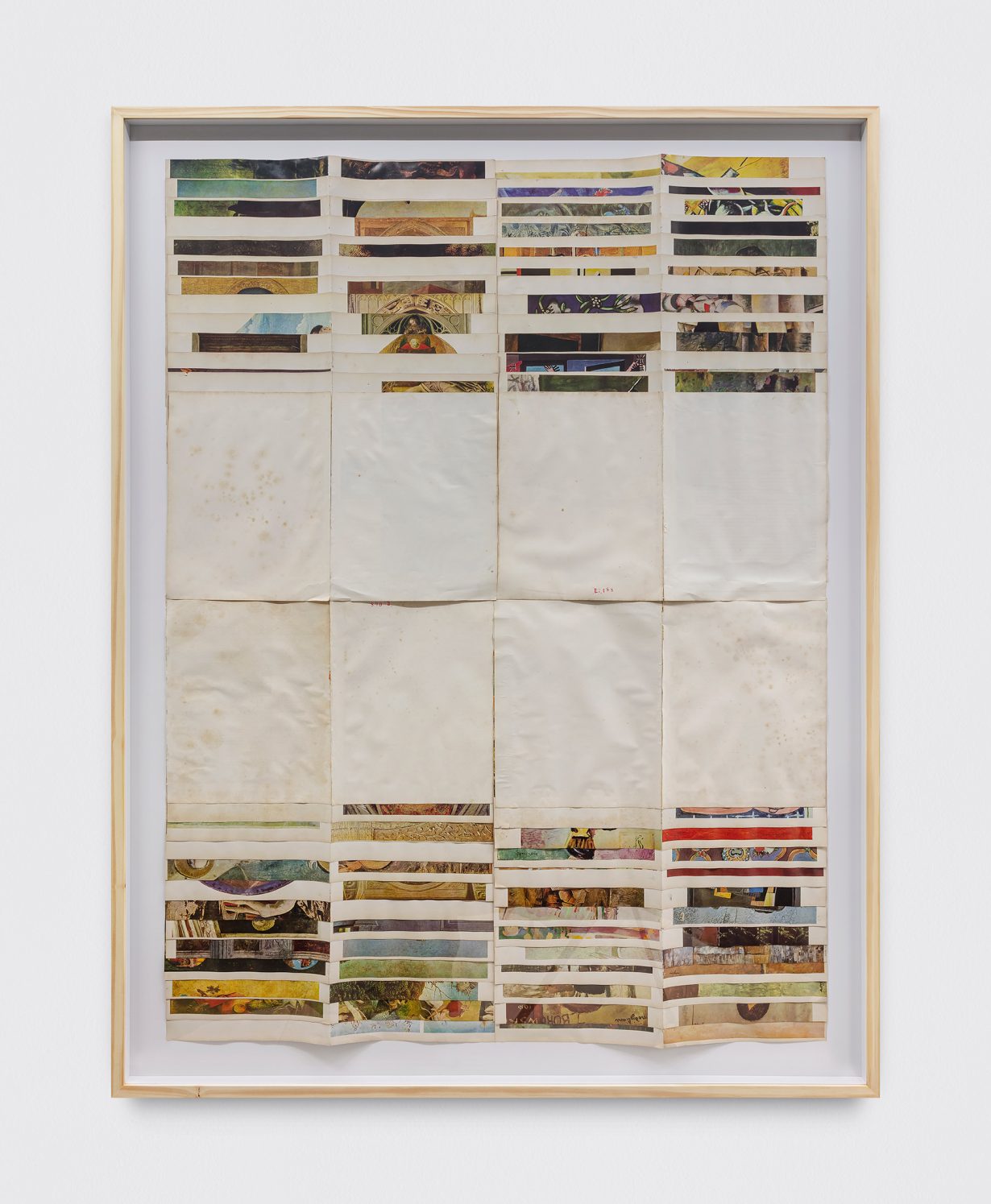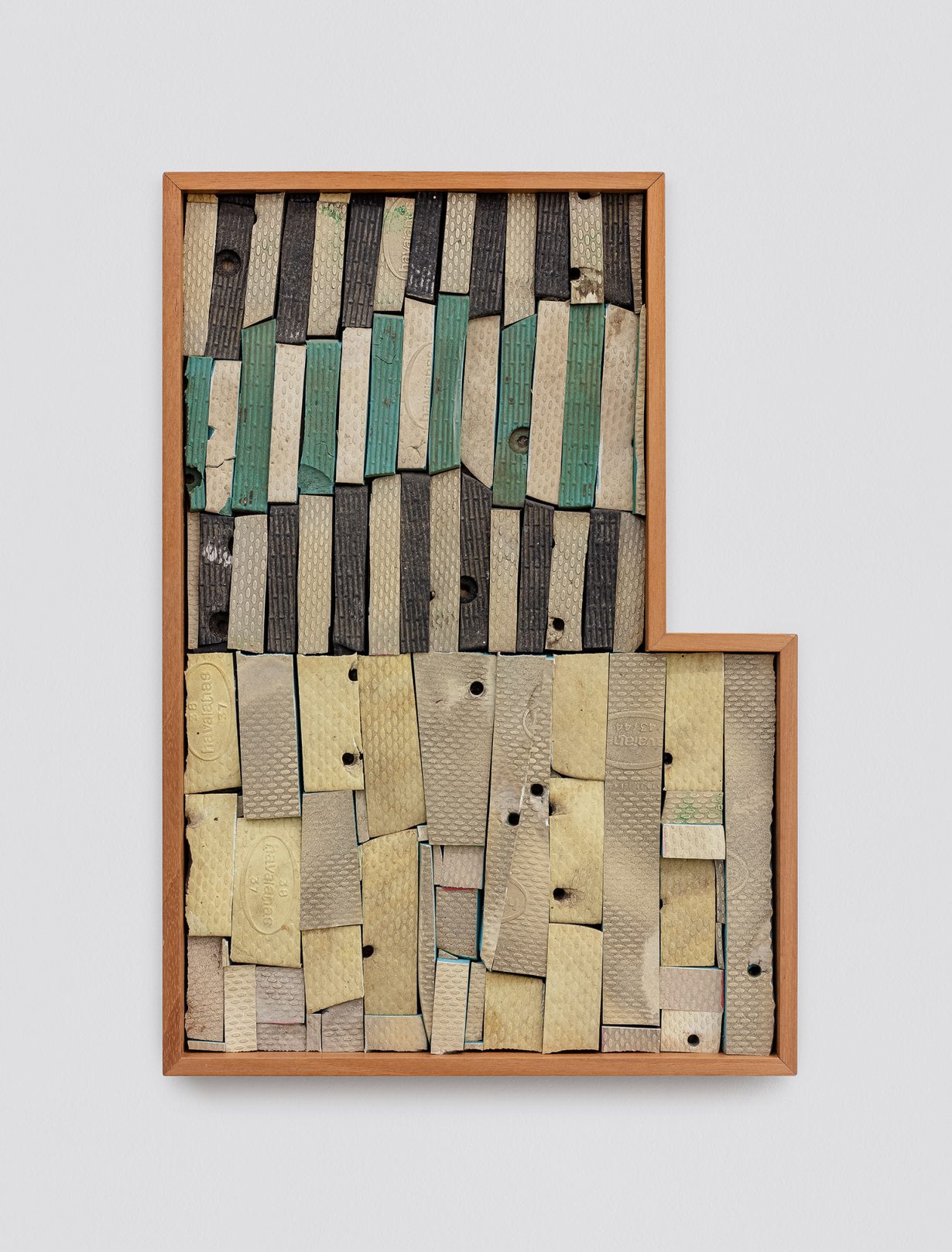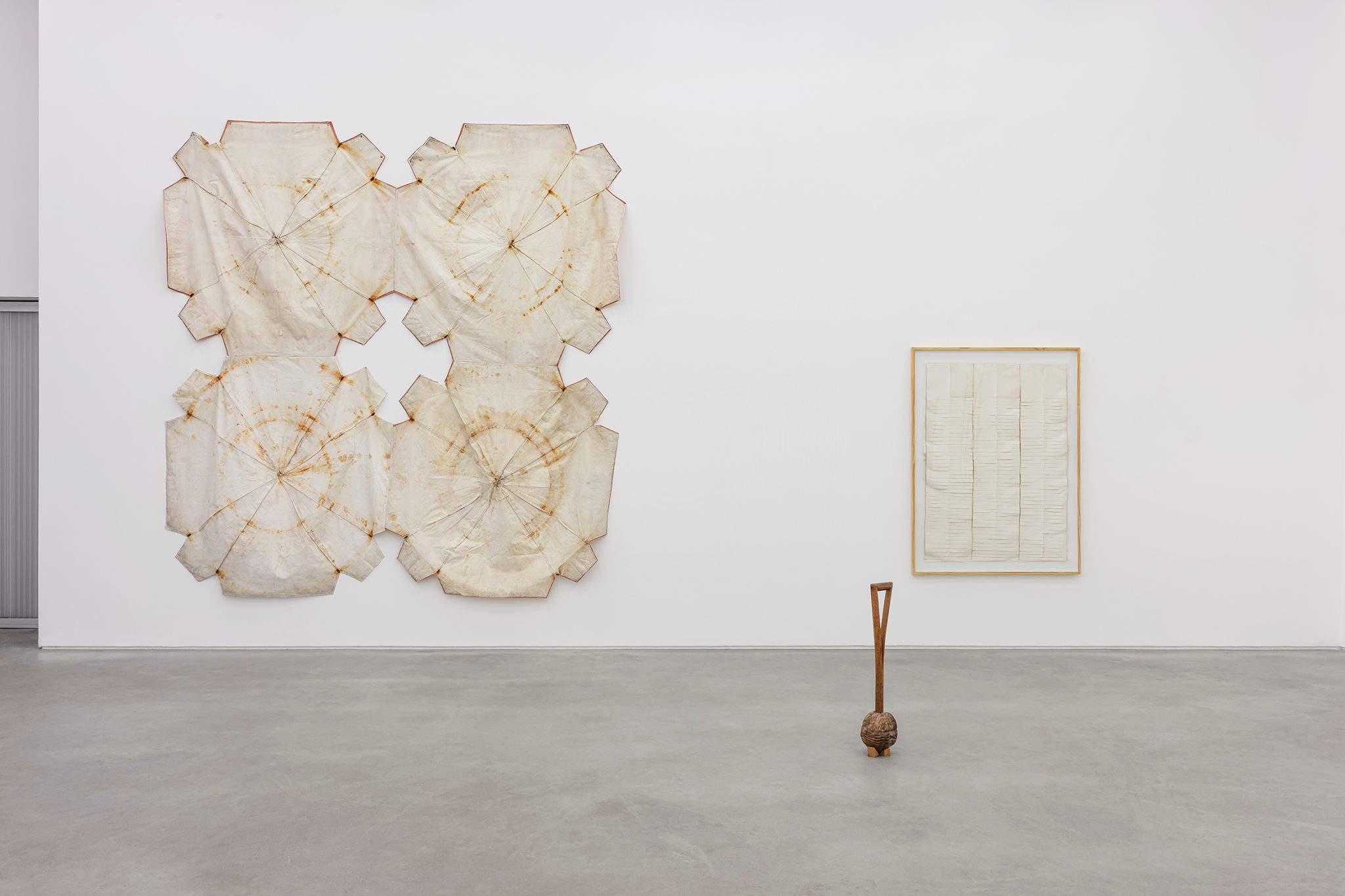A new show at Casa Triângulo, São Paulo searches for the sublime and sacred in the smallest of details
In Gênios da pintura 1 (Geniuses of Painting 1, 2021) – a framed geometric collage of layered pages from a cheaply illustrated art-history book of the same title – a detail from a religious painting can be partially seen. A cherub holds a weighty-looking jewel-encrusted crown, preparing to place it, we presume, on the obscured head of Christ. It’s a tiny moment in Zé Tepedino’s exhibition of sculptures and sculptural wall works that signals its running theme: the weight of history; how heavy the passing of time can sit; death, and perhaps even resurrection.

The pages of the book are water damaged and stained, a feature of Avesso (Reverse, 2020) and Avesso III (Reverse III, 2021), two other wall works on a much larger scale in which the Carioca artist has sewn old and frayed parasols (the former an array of faded colours, the latter white and with the letters of a beer brand faintly visible). The stitching is haphazard, matching the sun-bleached material and the rust shadows where the salt-corroded metal frames of the sun shades have rubbed over many years of use.
Similar notations of time, stains ingrained through use, are evident in Ascensão (Ascension, 2022), box-framed compositions made from assembled sections of different coloured discarded Havaianas flipflops, worn ubiquitously in the artist’s home city. Available in a range of summery colours, their treads are soon a uniformity of street soot and sand. Here, art historical allusions to Concretism and Geometric Abstraction are nodded to in how Tepedino has sharply cut and juxtaposed the small elements of the rubber. Loja A (Shop A, 2019) features a pile of used receipt books stacked on a workman’s desk, a totem to a lifetime of labour. To the old torn underlay fabric of Mangaratiba (2022), the artist has attached slices of husked coconut, all moisture and life sapped out.

Tepedino appears undaunted by the grand existentialism with which he plays in these otherwise seemingly effortless gestures. While one can make allusions to various strands in the art-historical canon, it is perhaps Robert Smithson, who once wrote that ‘a great artist can make art simply by casting a glance’, to whom the Brazilian is most indebted in finding the sublime and sacred in the smallest of details: a video documents Projeto Boate (Nightclub Project, 2021), an action in which Tepedino covered a concrete jetty with a large sheet of dark material. Shot in black-and-white from a fixed position, the fabric ripples in the wind, barely distinguishable from the surface of the sea beyond. It possesses, like much of the work here, a meditative, romantic beauty; a little thread pulled to reveal the big ideas of life.
Tudo é a forma que fala at Casa Triângulo, São Paulo, through 18 March
